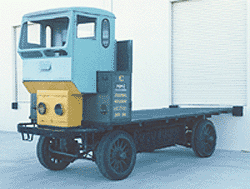Albert Mroz
| Special to Transport TopicsWhen Electric Vehicles Ruled the Road
In the late 19th century, as today, many people thought that technology would solve mankind’s problems. This was the era when electricity became a modern power — the first electric motors were developed by such men as Elihu Thompson, Nikola Tesla, Thomas Edison and Hiram Maxim, who became better-known for developing the machine gun.
Electricity was quickly put to work driving vehicles over the ground. America’s first practical hauler powered by electricity was built in 1891 by William Morrison. This was a “jitney” powered by a Siemens motor that used 24 batteries weighing 700 pounds. It was capable of carrying cargo and passengers at a top speed of 14 mph, and caused a sensation at the Chicago Columbia Exhibition of 1893. One of the vehicle’s drivers, Harold Sturges, bought a copy and improved upon it. Soon, others joined the technological revolution.
For the full story, see the Dec. 20 print edition of Transport Topics. Subscribe today.
 |  Albert Mroz |
 | The 1916 C.T. Electric was a successful adaptation of battery power in commercial delivery. Subsequent models continued to deliver newspapers as late as 1962. This unit was retired to the Hays Antique Truck Museum in Woodland, Calif. |
Electric vehicles were seen as high technology, and they came into favor at a time when nobody foresaw the immense problems of air pollution and oil spills that would arise decades later after the internal combustion engine had become the popular choice. The benefits of electricity over carbon-based fuel weren’t fully comprehended back then.
When Frank R. Ford died of carbon monoxide poisoning in 1900, a newspaper reported that “he was overcome in his barn by some mysterious gas.”

